14 Warning Signs An Outdoor Cat Needs Immediate Help
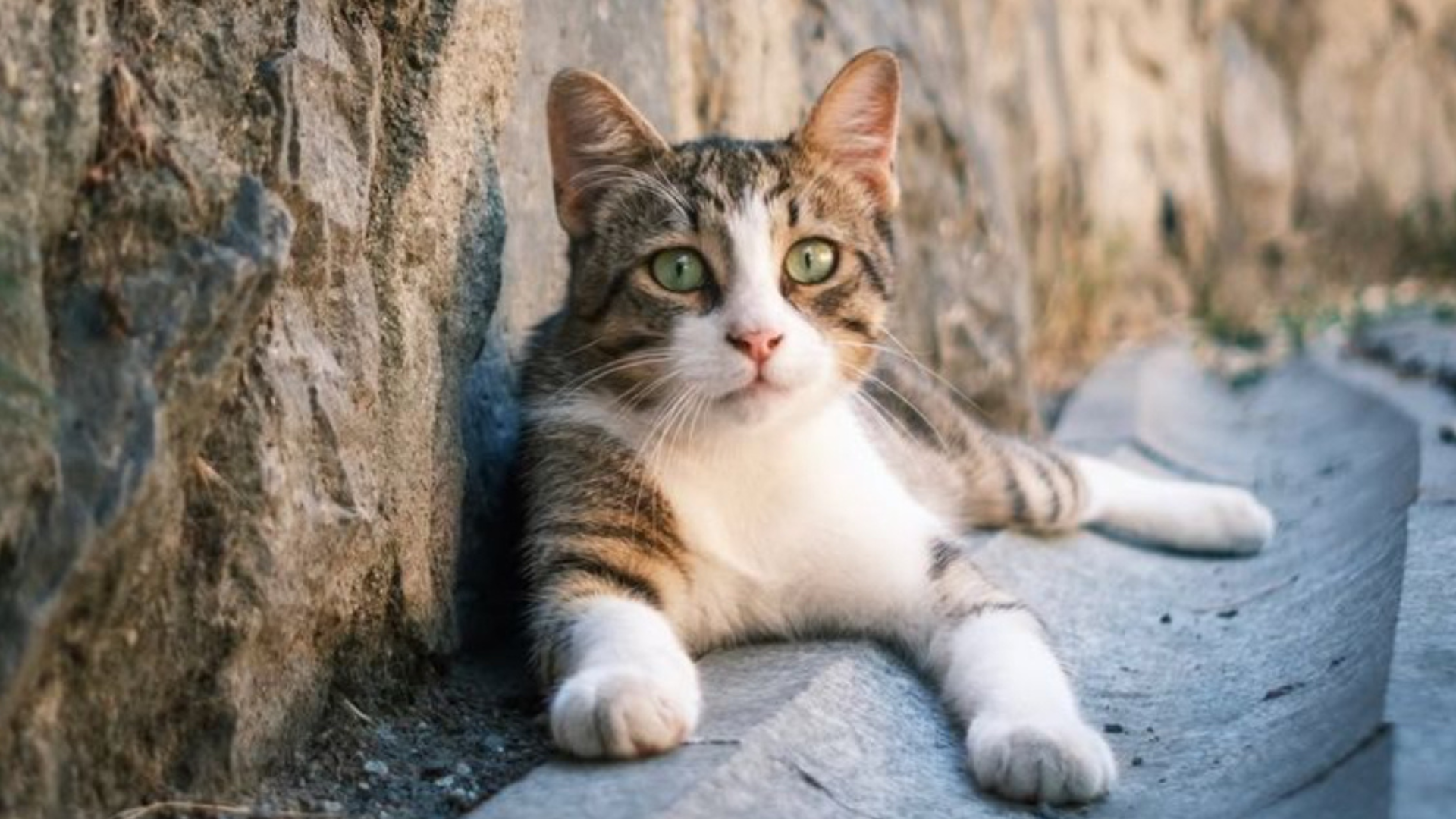
Have you ever noticed an outdoor cat acting strangely – maybe moving slower than usual or breathing heavily?
Even the most independent felines can sometimes show subtle signs of distress. Let’s explore the warning signs that indicate an outdoor cat might need immediate help and consider what these signals could mean for its well-being.
1. Sudden Lethargy
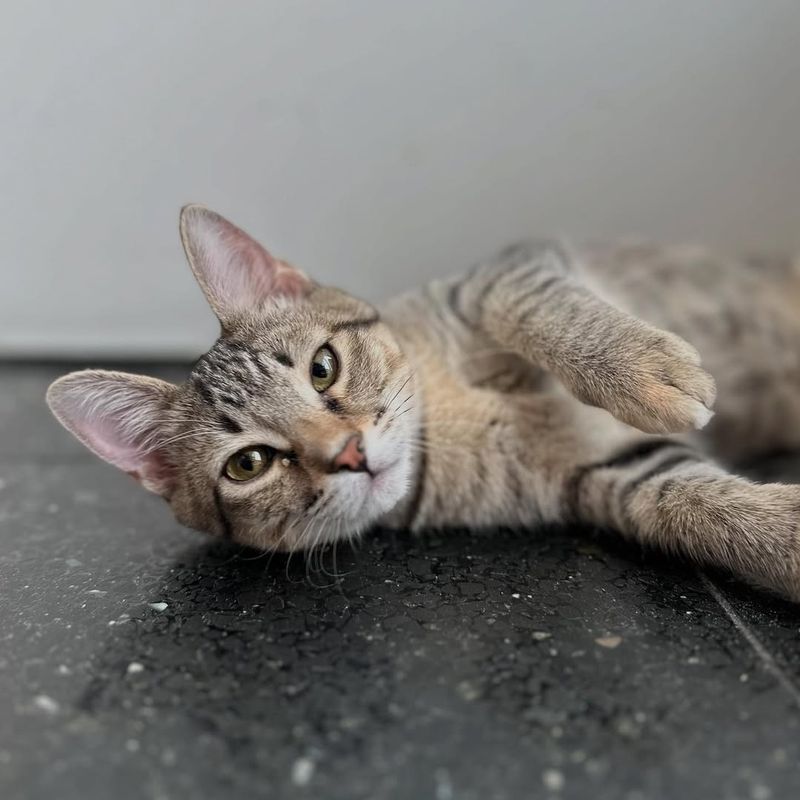
When your once-energetic cat suddenly resembles a furry couch potato, it’s time to investigate. Lethargy can be a sign of various issues ranging from minor infections to more serious conditions. If your feline friend chooses napping over playtime, it might be more than just being a lazy kitty. Unlike humans, cats can’t binge-watch their favorite series, so there’s no plausible excuse for prolonged inactivity.
Cats are natural hunters and explorers, so a change in activity level can be a significant red flag. Environmental hazards, like ingesting poisonous plants or being injured, can dampen their spirits. Furthermore, exposure to toxins or internal parasites can sap their energy.
The root cause might be something serious requiring prompt attention. Remember, being proactive with a sudden lethargy can prevent more severe health issues down the line. Cats are skilled at hiding discomfort, so vigilance is key. Always keep an eye on sudden behavioral changes.
2. Rapid Weight Loss
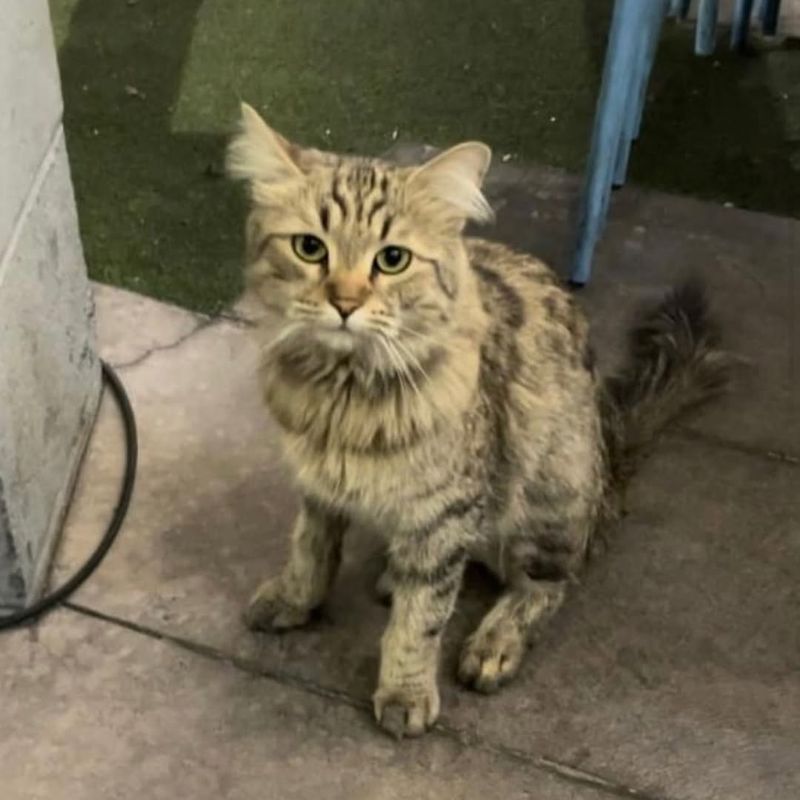
When a cat starts looking a bit too svelte, it’s not necessarily a fashion choice. Rapid weight loss can be alarming and is often indicative of underlying health problems. While some cats might be trying a new “catwalk” diet, more often than not, it could signal issues like hyperthyroidism, diabetes, or even cancer.
Outdoor cats are exposed to various potential threats, including parasites like worms that can cause weight loss. If your cat is eating normally but losing weight, this could be the culprit. Alternatively, failing to eat due to dental issues or stress from changes in environment can also contribute.
Weight loss can affect a cat’s energy and overall well-being significantly. Regular check-ups can help catch these issues early, ensuring your feline friend stays healthy and happy.
3. Unkempt Fur Appearance
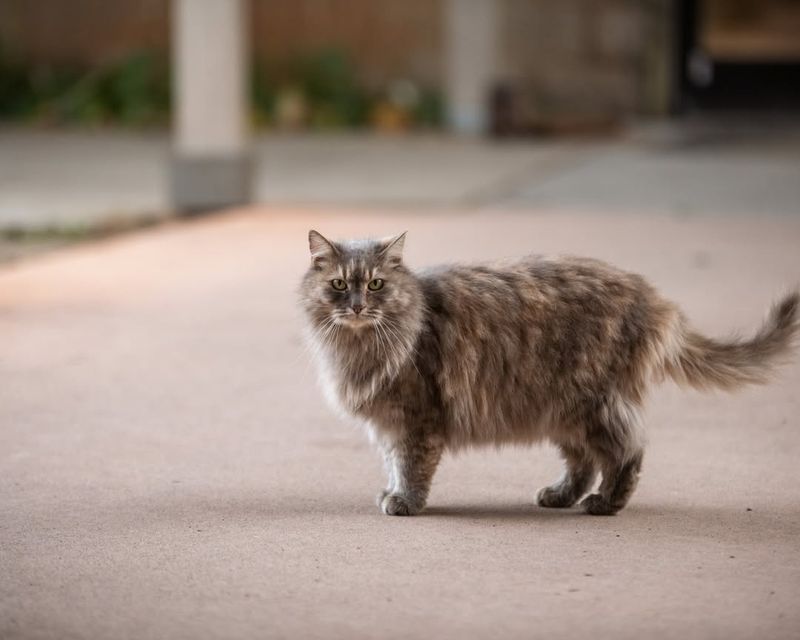
A well-groomed coat isn’t just for show; it’s a sign of good health. If your cat suddenly adopts a disheveled look, it could be a cry for help. Cats are usually meticulous groomers, taking pride in their shiny coats. When they stop grooming, it often indicates an underlying health issue.
Various conditions can lead to an unkempt appearance, from arthritis, which makes grooming painful, to dental issues that cause discomfort. Stress or depression can also lead a cat to neglect its grooming routine. Additionally, skin problems like fleas or allergies can contribute to a less-than-flawless fur coat.
If an outdoor cat starts resembling a mad scientist with wild, untamed fur, it’s time to take action. Regular grooming sessions can help address the root cause. Ensuring good nutrition and a stress-free environment can also promote a healthier, shinier coat.
4. Labored Breathing
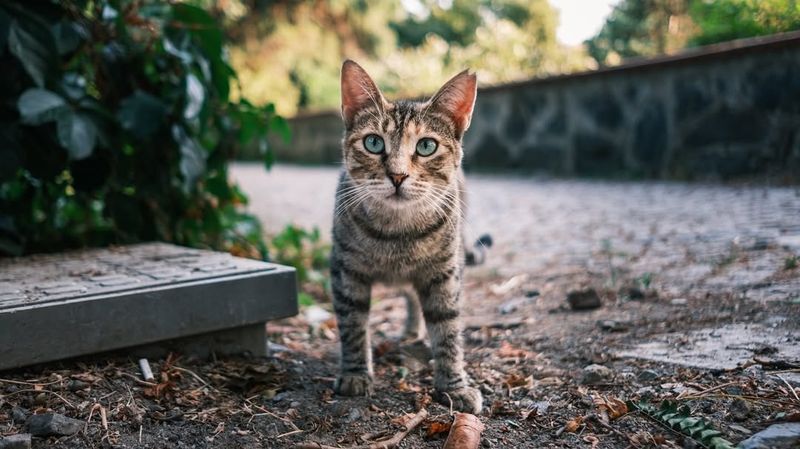
A cat’s breathing should be as smooth as a jazz tune. If your feline friend suddenly starts breathing heavily, it’s a major red flag. Labored breathing can indicate respiratory issues, including asthma or infections, which require immediate attention.
Cats are adept at hiding discomfort, but labored breathing is hard to miss. It might also point to heart problems or fluid in the lungs. Environmental allergens, like pollen or pollution, can exacerbate breathing difficulties in outdoor cats.
If your cat’s breathing sounds more like a freight train than a gentle purr, don’t ignore it. A calm, quiet recovery space can also help reduce stress during this time. Remember, early intervention can prevent potentially life-threatening complications.
5. Persistent Sneezing
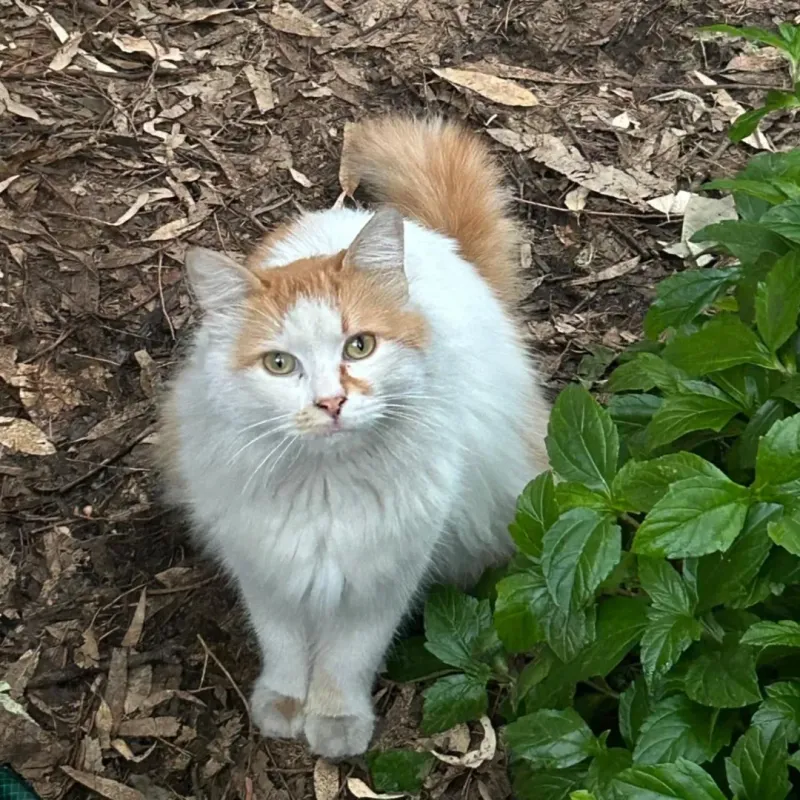
While a sneeze or two might seem cute, frequent sneezing could signal trouble. Cats sneeze for various reasons, but persistent sneezing often indicates an underlying problem. It could be as simple as an allergy to something in their environment or as serious as an upper respiratory infection.
Outdoor cats are exposed to all sorts of particulates, from pollen to dust, which can trigger sneezing fits. Viruses and bacteria, like the feline herpesvirus or calicivirus, can also be culprits. Persistent sneezing might be accompanied by other signs like nasal discharge or watery eyes.
Identifying the cause early can make treatment easier and more effective. Keeping your cat’s environment clean and minimizing allergens can also help reduce sneezing episodes.
6. Open Wounds or Abscesses
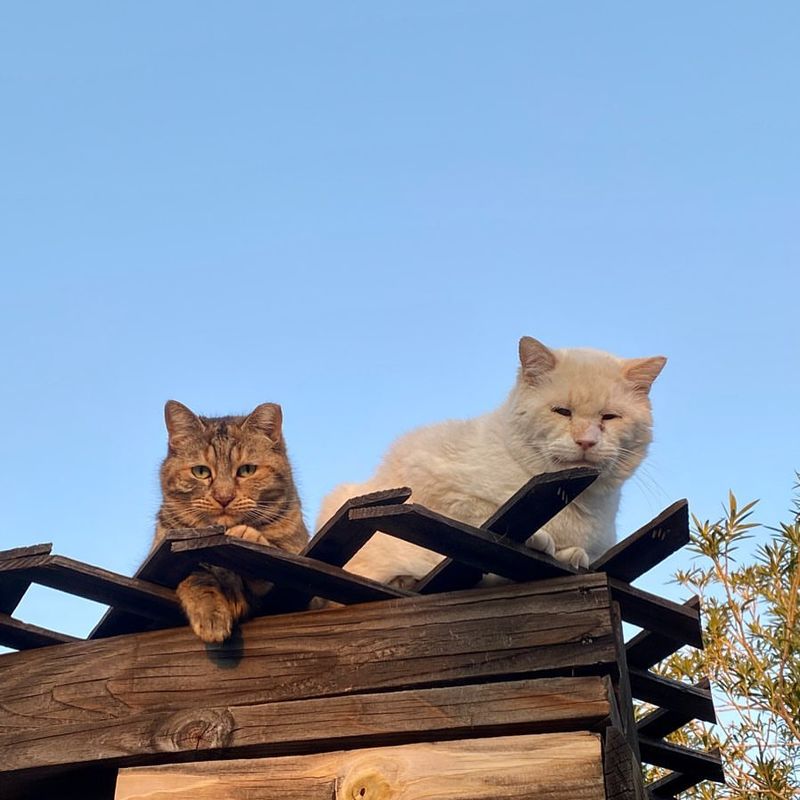
Cats are notorious for getting into scraps, but an open wound is no laughing matter. If your cat sports an open wound or an abscess, it needs attention. These wounds can lead to infections if not treated properly.
Outdoor cats face the risk of injuries from fights with other animals or mishaps while exploring. An abscess forms when bacteria enter a wound, causing a painful, pus-filled swelling. They can cause fever and lethargy, signaling your cat’s immune system is battling an infection.
Treating open wounds involves cleaning and sometimes antibiotics. A vet can assess the severity and prescribe appropriate treatment. Keeping a close eye on your cat’s interactions with other animals can prevent future injuries. Prompt attention to wounds helps avoid complications and promotes quicker recovery.
7. Excessive Vocalization
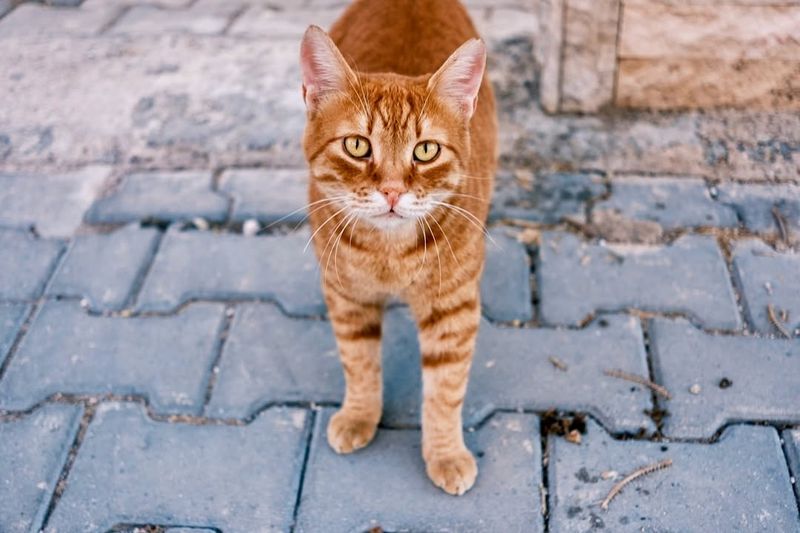
Cats have a variety of ways to communicate, but when they start channeling their inner opera singer, it’s worth paying attention. Excessive vocalization can be more than just a plea for attention; it might indicate pain or discomfort.
Outdoor cats might vocalize more if they’re disoriented or lost in bad weather. Medical issues like hyperthyroidism or high blood pressure can also increase vocalization. Stress from changes in their territory can make a cat more vocal as well.
If your cat’s serenades become incessant, it’s time to investigate. Providing a stable, reassuring environment can also help reduce stress-induced vocalization. Remember, understanding your cat’s language is key to ensuring their well-being.
8. Difficulty Walking
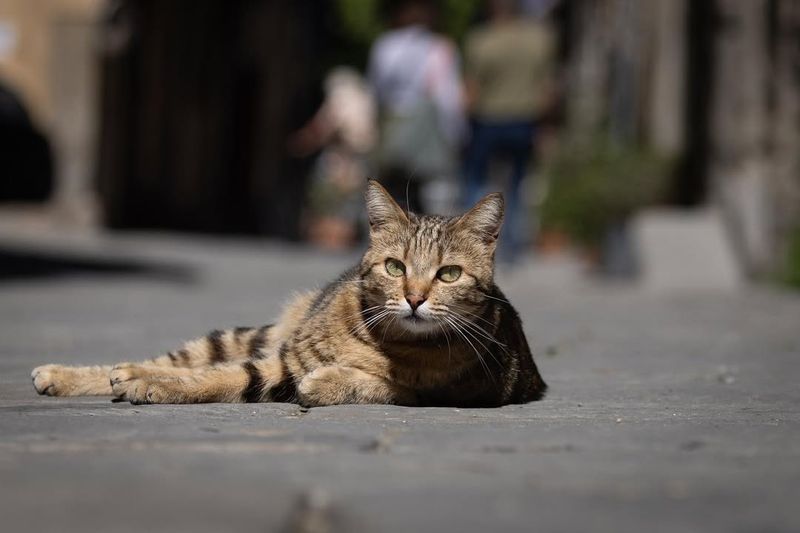
When a cat’s graceful stride turns into a wobbly walk, it’s time to take note. Difficulty walking, or lameness, can stem from various issues, including injuries, arthritis, or neurological problems. Outdoor cats are prone to sprains or fractures from falls or mishaps during their escapades.
Limping might also indicate a foreign object lodged in their paw or an infectious disease affecting their muscles. Paying attention to how your cat moves can provide clues to the underlying problem. Watch for signs like swelling, tenderness, or a leg held at an odd angle.
Rest and restricted movement often help in recovery, but severe cases might require interventions like medication or surgery. Keeping a watchful eye ensures your cat remains a nimble adventurer.
9. Changes in Appetite
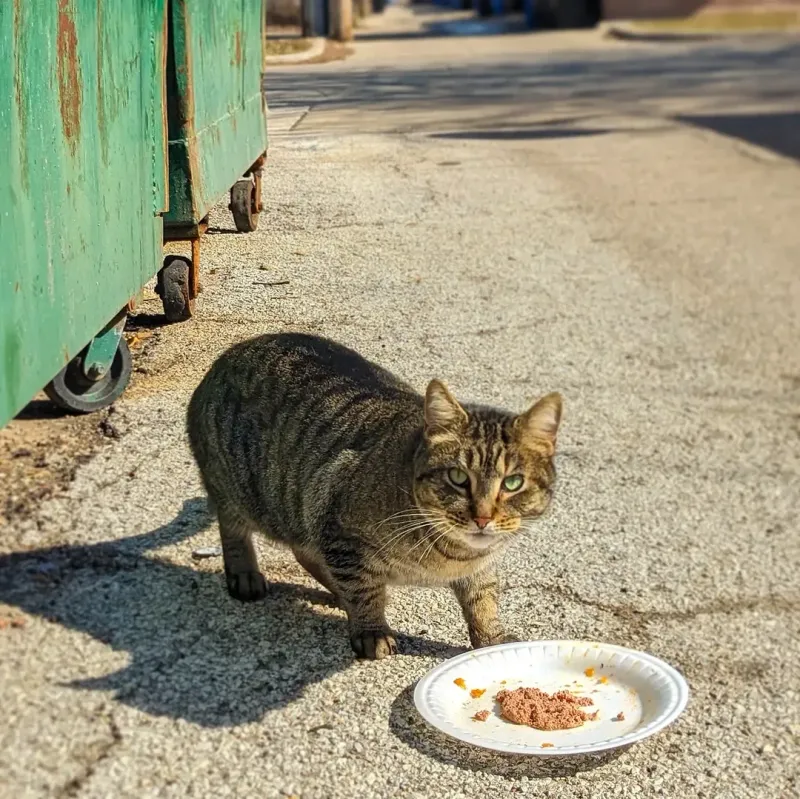
Cats are creatures of habit, especially when it comes to food. A sudden change in appetite should raise your eyebrows. Whether it’s an insatiable hunger or a disinterest in food, appetite changes can indicate health issues.
Outdoor cats might experience appetite changes due to stress, illness, or exposure to toxic substances. Dental problems can make eating painful, while conditions like diabetes or hyperthyroidism can increase hunger.
Monitoring their diet and ensuring fresh, nutritious food is available helps maintain their health. Keeping an eye on their weight and overall behavior provides additional clues to their well-being.
10. Frequent Vomiting
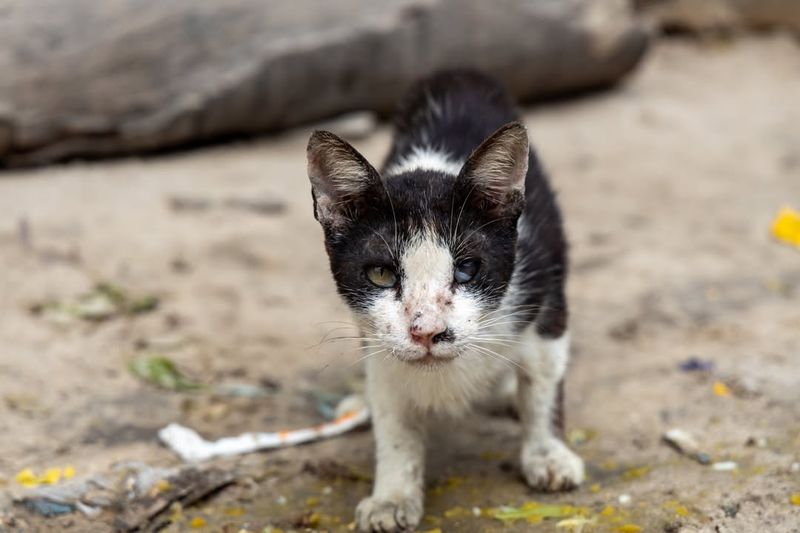
While the occasional hairball is part of cat life, frequent vomiting is not. It’s a sign that something might be amiss. Vomiting can result from dietary indiscretions, like eating something they shouldn’t have, or more serious conditions like kidney disease.
Outdoor cats are more likely to ingest harmful substances unknowingly. Parasites, infections, or food intolerances can also trigger vomiting. Frequent episodes can lead to dehydration or nutrient deficiencies, affecting your cat’s overall health.
Identifying the cause is crucial for effective treatment. Providing a safe, controlled environment and monitoring their diet can help prevent further episodes. Remember, it’s better to address the issue sooner rather than later.
11. Disorientation or Confusion

Cats are usually the epitome of confidence and poise. When yours starts acting like they’ve had one too many catnip cocktails, it’s a cause for concern. Disorientation can be a symptom of various conditions, including neurological issues or head trauma.
Outdoor cats face risks like accidents or falls that can result in head injuries. Additionally, conditions like low blood sugar or stroke can lead to confusion. If your cat stumbles, appears lost, or displays unusual behavior, it’s time to seek veterinary help.
Prompt intervention can prevent further complications and ensure your cat’s safety. Providing a calm, familiar environment can also help reduce disorientation. Keeping a close watch on their outdoor activities minimizes the risk of such incidents.
12. Excessive Scratching

Cats love a good scratch, but when it becomes excessive, it’s more than just a grooming ritual. Excessive scratching can indicate skin problems or parasites, like fleas or mites, that require attention.
Outdoor cats are more exposed to allergens and parasites that can irritate their skin. Flea allergies, fungal infections, or dermatitis can cause incessant scratching. If accompanied by hair loss or redness, it’s definitely time for a check-up.
Addressing excessive scratching involves identifying and treating the underlying cause. Regular grooming and flea prevention can help keep your cat’s skin healthy and itch-free.
13. Hiding or Withdrawal
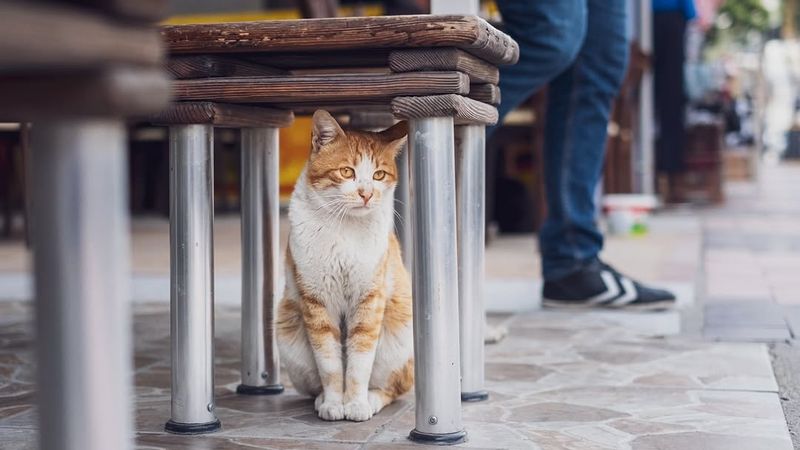
Cats enjoy their independence, but excessive hiding or withdrawal is a sign that something’s wrong. When your outdoor cat suddenly turns into a recluse, it can indicate stress, illness, or injury.
Changes in the environment, like new pets or construction, can stress outdoor cats, leading them to seek solace in solitude. Illnesses or injuries might also cause them to hide, as they instinctively avoid predators when vulnerable.
Identifying stressors and providing a safe, stable environment can help reduce withdrawal. Ensuring your cat feels secure encourages them to stay more engaged and active.
14. Unusual Urination Patterns
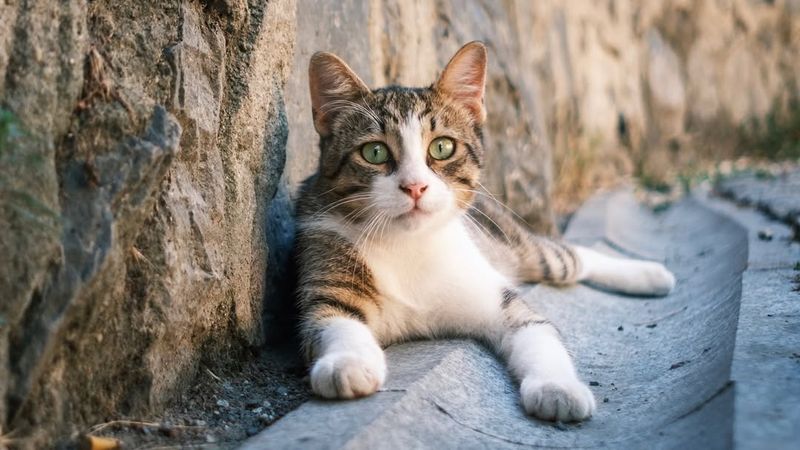
Cats are discreet with their bathroom habits, so unusual urination patterns can be surprising. Frequent urination, straining, or inappropriate urination can indicate urinary tract problems or infections.
Outdoor cats might face additional risks like dehydration or urinary blockages from mineral buildup. Conditions like feline lower urinary tract disease (FLUTD) require prompt attention.
Ensuring access to fresh water and a clean litter area can help prevent urinary issues. Understanding the cat’s bathroom habits helps in detecting early signs of potential health problems. Remember, catching issues early can save your cat from discomfort and more serious complications.
